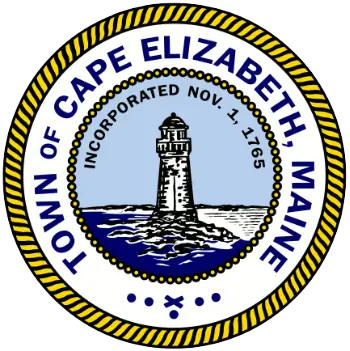Published on November 04, 2022

The Cape Elizabeth School Department has received the anticipated New England School Development Council (NESDEC) Student Enrollment Forecast based on October student enrollment numbers as reported to the MDOE. Per the report, NESDEC is projecting that Cape Elizabeth student enrollment will increase by 1.3% by 2032-2033. This report concurs with recent Enrollment Projections for Cape Elizabeth from Wandell Consulting, which shows a similar increase; NESDEC projects enrollment to be 1529 and Wandell Consulting projects 1550 by 2033.
Both NESDEC and Wandell Consulting under-forecasted enrollment for the 2022-2023 school year. Currently, enrollment for Cape Elizabeth Schools Grades K-12 is 1509 students. NESDEC predicted enrollment to be 1456; Wandell Consulting predicted 1487. During a September 13 School Board meeting, Superintendent Christopher Record reported that the greatest growth this year is seen at Pond Cove Elementary School with 65 more students than last year. "We have been looking into the reasons why, and it’s really because there are families with young children that have moved here,” Record said.
Record has also said, "There is a science and art" to enrollment forecasts and getting comparisons is critical, "As enrollment impacts the yearly budget and the new schools project." As the November 8 election and New Schools Bond Referendum is only a few days away, enrollment numbers has been one aspect referred to by both sides of the ballot measure. Advocates for the bond cite the need for more space at the elementary and middle schools by drawing attention to such things as services being conducted in closets, makeshift classrooms, and hallways. Opponents of the referendum cite the decrease in enrollment over the past 15 years.
Below is a narrative summary taken from the NESDEC report:
The global pandemic continues to influence our nation’s public health and economic stability in unpredictable ways. As such, it is still too early to identify many of the factors that could impact school enrollments. Over the past school year, we have seen fluctuations in the real estate market and job trends, which have impacted student attendance patterns. Moreover, during the past school year, we have seen how school enrollment patterns can differ substantially from one district to another, with some districts losing students while others experience an influx of students.
We are pleased to send you this report displaying the past, present, and projected enrollments for the District. These ten-year projections are designed to provide the District with yearly, up-to-date enrollment information that can be used by boards and administrators for effective planning and allocation of resources. Included in this report are graphs representing historical and projected grade-by-grade enrollments, as well as historical and projected enrollments in grade combinations. We have received the figures given to us by the District, and we assume that the method of collecting the enrollment data has been consistent from year to year.
Enrollment projections are more reliable in Years #1-4 in the future and less reliable in the “out-years.” Projections six to ten years out may serve as a guide to future enrollments and are useful for planning purposes. In light of this, NESDEC has added a “Second Semester refresher” enrollment projection at no cost to affiliates. (For more information, please refer to the Reliability and Use of This Document section).
The NESDEC enrollment projection fell within -53 students of the K-12 total, 1,456 students projected vs. 1,509 enrolled. One variance of -17 students occurred at Kindergarten, 107 projected vs. 124 enrolled. Ratios have been adjusted.
Births decreased by -6 from a previous ten-year average of 64 to a projected average of 58. In most districts, enrollments in Grades 1-8 are very stable environments. However, there have been increases in 6 of the 8 most recent years, leading to a net increase averaging 18 students per year.
Over the next three years, K-4 enrollments are projected to increase by 14 students, Grades 5-8 enrollments are projected to increase by 22 students, and Grades 9-12 enrollments are projected to decrease by -53 students, as students move through the grades.
